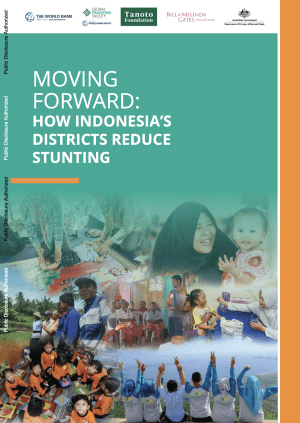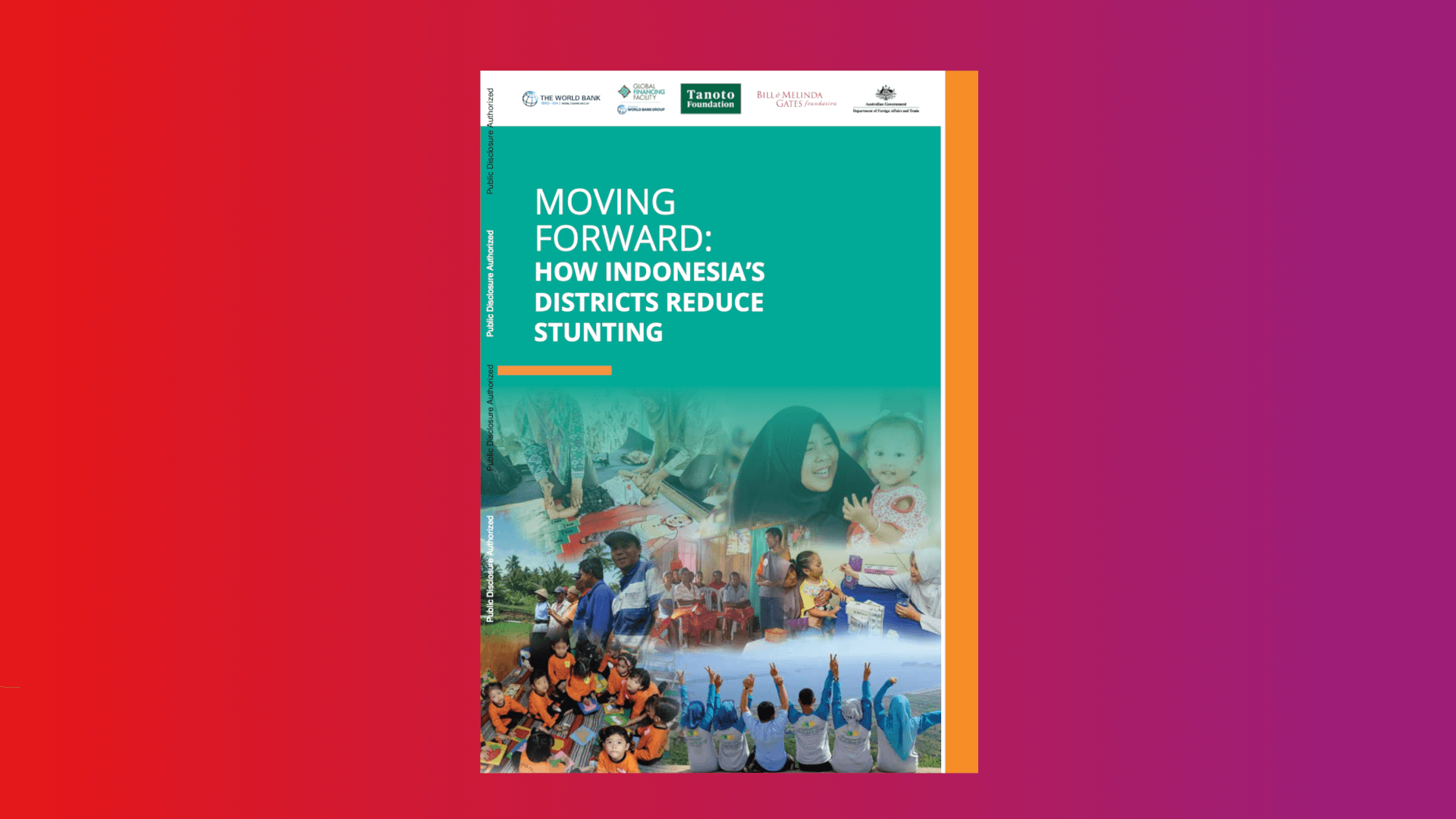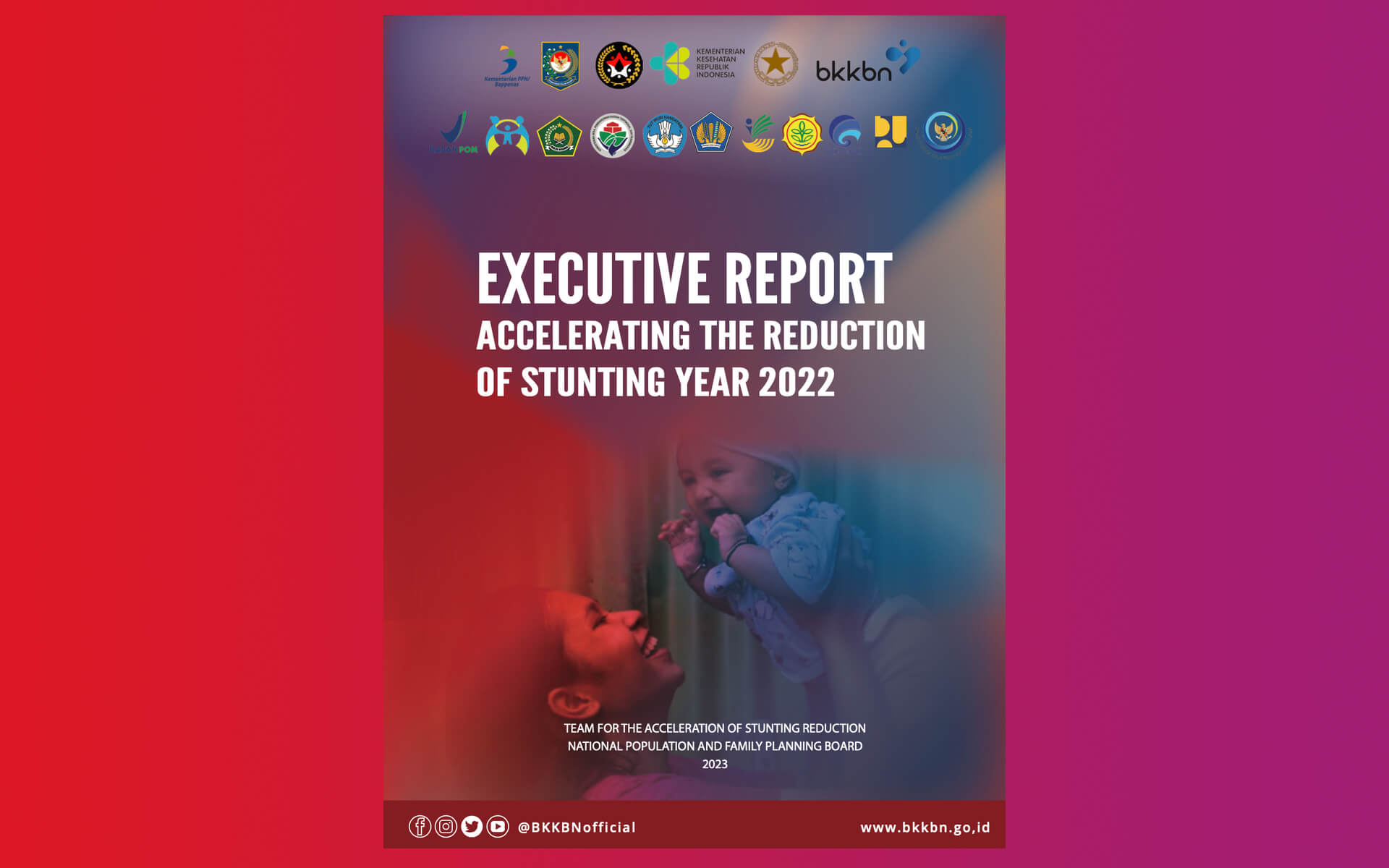 This book is written in several parts: an introduction in Chapter 1; stories of best practices from the field in Chapter 2, and lessons learned from implementation of nutrition programs in Chapter 3. We conclude with a chapter highlighting key takeaways from the best practices and lessons learned. A technical discussion on stunting projections at the national and district levels is included in the annex. Chapters two and three feature stand-alone stories of best practices or lessons learned from nutrition programs in Indonesia. The reader is welcomed to move from story to story in any order desired.
This book is written in several parts: an introduction in Chapter 1; stories of best practices from the field in Chapter 2, and lessons learned from implementation of nutrition programs in Chapter 3. We conclude with a chapter highlighting key takeaways from the best practices and lessons learned. A technical discussion on stunting projections at the national and district levels is included in the annex. Chapters two and three feature stand-alone stories of best practices or lessons learned from nutrition programs in Indonesia. The reader is welcomed to move from story to story in any order desired.
In Chapter 2, the stories feature projects in the provinces of East Kalimantan, Central Java, East Java, West Nusa Tenggara and East Nusa Tenggara.
In East Kalimantan’s City of Samarinda, we learned about the innovative clustering method of the Program Pesut Mahakam – the brainchild of the head of the local Puskesmas – which enabled kaders, midwives and nutritionists to deliver effective and continuous maternal and child health care in an integrated manner.
In Surabaya City of East Java Province, one woman’s drive and determination ensured no Posyandu was left behind when it came to accessing fun games and songs delivered through emotional demonstrations – Emo-Demos – which served to change health and care-taking behavior of pregnant women and young families.
In Nganjuk District in the province of East Java, a midwife’s community empowerment efforts triggered a district-wide success in embracing the Taman Posyandu Program which integrates basic social services in the Posyandu.
In West Nusa Tenggara Province, West Lombok District has shown Indonesia and other parts of the world how effective leadership and multisectoral coordination and collaboration can turn the tide against stunting.
In Eastern Indonesia, more specifically the province of East Nusa Tenggara, we learned how community engagement was key to sustainable treatment for acute malnutrition or wasting, and how perseverance and continuous community involvement enabled a donor-funded program – Community Management of Acute Malnutrition (CMAM) – to be developed and integrated with the national program. As CMAM’s next iteration, the Integrated Management of Acute Malnutrition (IMAM) is now being scaled-up nationwide.
Whereas in parts of East Nusa Tenggara and East Java, integrated planning, implementation and monitoring of maternal nutrition programs – long managed independently of one another – were key to addressing micronutrient deficiencies and treating diarrhea among pregnant women and children, as evidenced by the Micronutrient Supplementation for Reducing Mortality and Morbidity (MITRA) Program.
In West Sumbawa District of West Nusa Tenggara, through the award-winning Pencerah Nusantara Program, we discovered that revitalizing the primary health care centres (Puskesmas) with a team of well- trained, young healthcare professionals can make the difference in improving the health and well-being of rural communities, including pregnant women and young children.
In the Timor Tengah Selatan District of East Nusa Tenggara, one of the most food insecure regions of Indonesia, giving farming and animal husbandry skills to households, especially those led by women, proved pivotal to ensuring sustainable access and consumption of micronutrient-rich foods. The program, known as Rapid Action on Nutrition and Agriculture Initiatives (RANTAI), was part of the multisectoral Project Laser Beam, described in Chapter 3.
As the pilot site of a novel but crucial mentorship program, the local government of Banggai District in the Province of Central Sulawesi received mentoring and technical supervision for maternal and child health from Hasanuddin University (UNHAS), thanks to the collaboration between the local government and experts from the Institut Gizi indonesia (iGi).
As we move back to the Island of Java, specifically the Special Region of Yogyakarta, we learned how the local government worked hand-in-hand with the community to successfully implement the Community-Led Total Sanitation (CLTS) or Sanitasi Total Berbasis Masyarakat (STBM) strategy, winning awards from the Central Government along the way. Read more on the role of the Sultan of Yogyakarta in the story.
In Chapter 3 of this book, we move from story-telling to provide lessons learned from nutrition initiatives implemented by the central government, non- governmental organizations, development partners and private sector. In East Nusa Tenggara Province, a multi-partner initiative introduced the multisectoral project, Project Laser Beam, to Timor Tengah Selatan District. The project focused on nutrition-specific and nutrition- sensitive initiatives to reduce child undernutrition.
In the Special Region of Yogyakarta, an innovative method to combine fish farming with rice farming (Minapadi), proved successful to increase not only the household income, but also improved the diversity in the diets of the villagers and this was done in an environmentally friendly and sustainable manner.
Changing health behaviors and caring practices of the first 1,000 days households, as well as improving public awareness of stunting had been identified as crucial steps to addressing stunting in Indonesia. The Ministry of Health developed the National Behavior Change Communication Strategy (StraCom) for stunting prevention and the story described the process of developing the StraCom.
Program Keluarga Harapan, a conditional cash transfer program initiated by the Government of Indonesia, was able to promote health and educational investments in children. Large reductions in stunting was also seen in children of beneficiaries.
The length mat is an important tool for raising community awareness of stunting. A summary from an assessment on the usage of the length mat “Tikar Pertumbuhan” provided recommendations on how the usage of the length mat can be optimized and scaled-up.
Last but not least, in keeping with the structure of this series, an updated stunting projection for the national level and a newly developed stunting projection for the district level are described in Annex 1 of this book. The models allow for estimations of stunting rates, based on nutrition-sensitive and -specific data.





